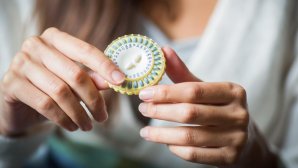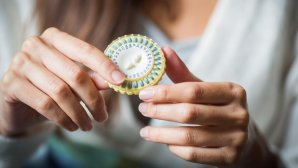Fertility charting is one of the easiest ways to understand your reproductive health better. It helps you know what's going on with your female body parts. There's a misconception that ovulation occurs every month for every woman on the 14th day of the cycle. Sorry to burst your bubble, that isn't the case always. The actual day of ovulation differs with every cycle and depends on several factors. Couples struggling to conceive can benefit by tracking when ovulation occurs.
Fertility charting helps you accurately pinpoint ovulation and your most fertile days. You can use this information to get pregnant naturally.
How To Chart Fertility Cycle?
Method 1: Track Your Menstrual Cycle
- Track your menstrual cycle for several months, as the cycles length can slightly vary from one month to another.
- The first day of your period is Day 1.
- Once you have tracked and calculated your cycle for several months, you can identify the first day when youre likely to be fertile by subtracting 18 from your shortest cycle. Subtract 11 from the length of your longest cycle to determine the last day when youre likely to be fertile.
- Having unprotected sex during this period increases your chances of conceiving.
Method 2: FAM By Measuring BBT
This FAM (Fertility Awareness Method) involves tracking the BBT (Basal Body Temperature). The basal temperature is your body's temperature at rest. Before ovulation, the basal temperature is low. Following ovulation, the body produces progesterone, which increases your basal temperature. The temperature rise is very minute, generally less than 0.5 degrees. By tracking your temperature regularly, you can identify ovulation accurately.
- Start by taking your temperature every morning.
- By tracking regularly, you can identify the subtle temperature rise that indicates your body has released an egg.
Using this method, you can identify when youre approaching ovulation. This is helpful youre most fertile 1 to 3 days before ovulation and within 12 to 24 hours of ovulation. This helps you plan when to have sex to increase your chances of getting pregnant.
Method 3: FAM By Monitoring Cervical Mucus
This method monitors changes in cervical mucus before and during ovulation. The cervical mucus is an alkaline medium that protects the sperm in the acidic vagina. Additionally, the mucus also nourishes the sperm and capacitates the sperm, preparing it to fertilize the egg.
- Insert a tissue or clean finger into your vagina to feel the mucus several times a day. Note the color and consistency of the fluid.
- Just before ovulation, when youre most fertile, the mucus is stretchy, clear and slippery something like the consistency of raw egg whites.
This helps you identify when you're most fertile, thereby improving your chances of getting pregnant.
If you're looking to increase fertility awareness, using these three methods together can help you track your fertile days accurately. Just like it takes time to form a habit, fertility charting gets better with practice. The longer you track, the more you can understand your body. Start simple and stick to it.
Along with these methods, its helpful to consult Dr. Noelle King, a specialist in Portland womens health, to help you interpret the data you're tracking to ensure you have the best chances of successful conception. Charting your fertility cycle is the first step if you're looking to conceive naturally. You can also schedule an appointment with a gynecologist in Portland to assist with your charting.
Resource Box
The author is a popular gynecologist in Portland and provides holistic healthcare by incorporating natural and conventional treatments. Visit https://drnoelleking.com/ for more information.




















































Khi tham gia Trò chÆ¡i USBET, nhiá»u ngÆ°á»i chÆ¡i mong muá»n không chá» giải trà mà còn có Äược kết quả tá»t. Äá» Äạt hiá»u quả cao, viá»c nắm bắt má»t sá» kinh nghiá»m là vô cùng cần thiết.
TrÆ°á»c hết, ngÆ°á»i chÆ¡i nên lá»±a chá»n trò chÆ¡i phù hợp vá»i sá» thÃch và khả nÄng. USBET cung cấp rất nhiá»u thá» loại từ casino trá»±c tuyến, slot game, cá cược thá» thao Äến bắn cá. Nếu là ngÆ°á»i má»i, bạn nên bắt Äầu từ những trò ÄÆ¡n giản nhÆ° slot game hoặc bắn cá Äá» là m quen dần vá»i há» thá»ng.
Thứ hai, cần biết quản lý vá»n hợp lý. Dù là trò chÆ¡i nà o thì viá»c kiá»m soát sá» tiá»n Äặt cược luôn quan trá»ng. NgÆ°á»i chÆ¡i nên Äặt ra hạn mức cụ thá» má»i ngà y, không vượt quá sá» tiá»n Äó Äá» tránh rÆ¡i và o tình trạng thua lá» quá mức.
Ngoà i ra, hãy táºn dụng tá»i Äa các chÆ°Æ¡ng trình khuyến mãi của USBET. Những Æ°u Äãi nhÆ° thÆ°á»ng nạp lần Äầu, hoà n trả thua lá» hay tặng quà sá»± kiá»n giúp ngÆ°á»i chÆ¡i gia tÄng vá»n mà không cần bá» ra quá nhiá»u chi phÃ. Äây là má»t lợi thế lá»n nếu bạn biết táºn dụng Äúng lúc.
Kinh nghiá»m khác là nên tìm hiá»u chiến thuáºt cho từng trò. Và dụ, vá»i trò chÆ¡i bà i, ngÆ°á»i chÆ¡i cần nắm luáºt rõ rà ng và há»c há»i các mẹo từ cá»ng Äá»ng. Còn vá»i cá cược thá» thao, viá»c phân tÃch sá» liá»u và phong Äá» Äá»i bóng sẽ giúp tÄng khả nÄng chiến thắng.
Cuá»i cùng, ngÆ°á»i chÆ¡i nên giữ tâm lý thoải mái. USBET là má»t sân chÆ¡i giải trÃ, vì váºy hãy xem viá»c tham gia là cÆ¡ há»i thÆ° giãn thay vì chá» táºp trung và o thắng thua. Äiá»u nà y giúp bạn duy trì Äược tinh thần lạc quan và có những trải nghiá»m vui vẻ hÆ¡n.
Tóm lại, tham gia Trò chÆ¡i USBET hiá»u quả không chá» phụ thuá»c và o may mắn mà còn cần chiến lược và ká»· luáºt. Biết cách chÆ¡i thông minh sẽ giúp bạn vừa giải trà vừa mang lại giá trá» thiết thá»±c.